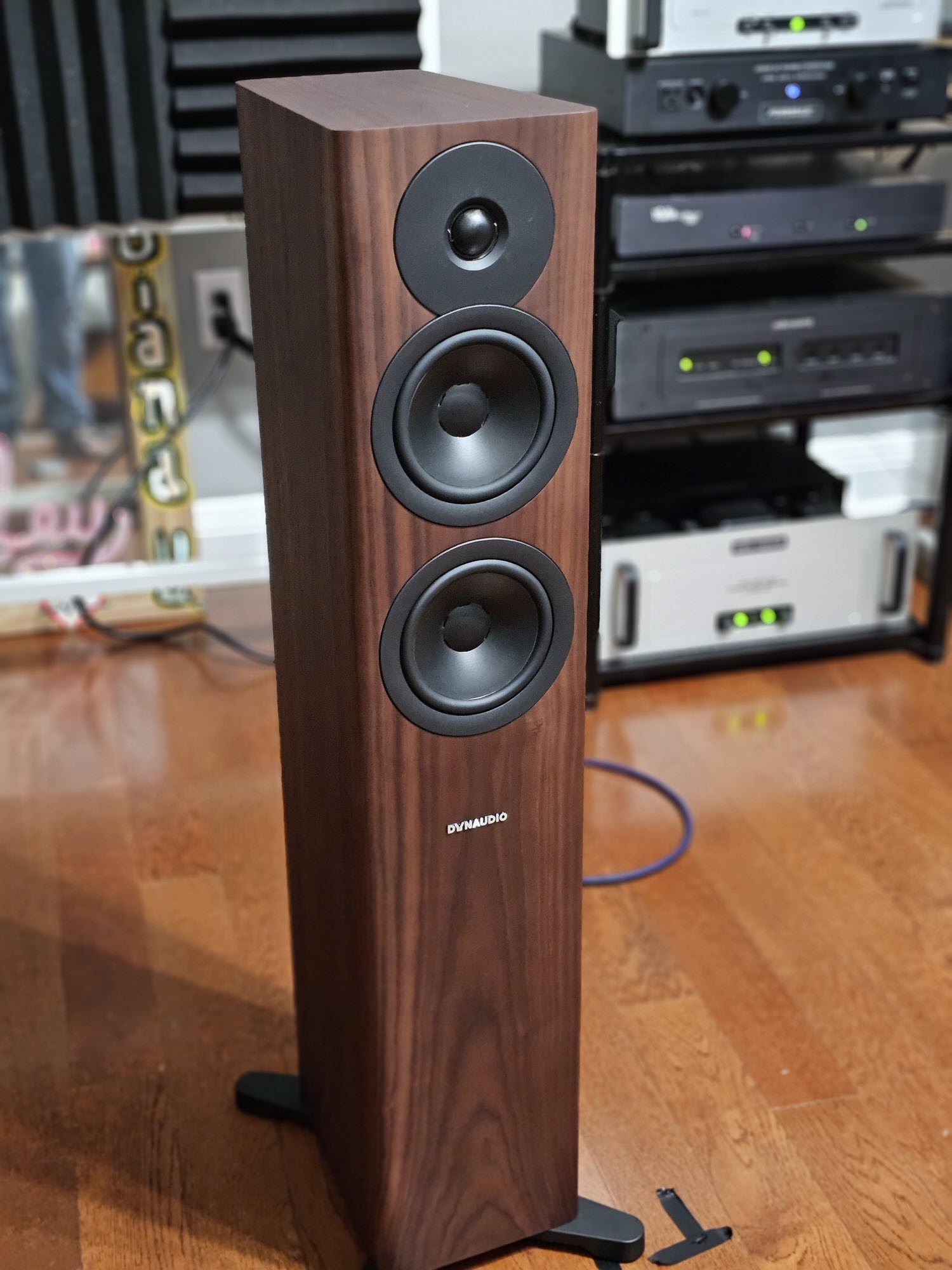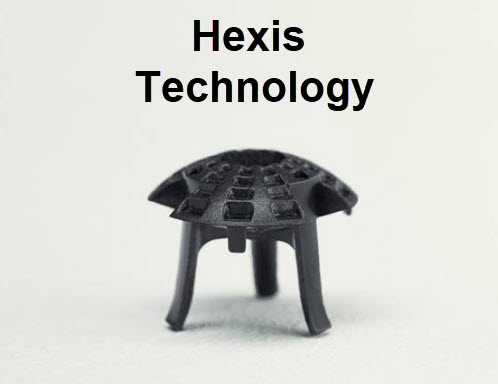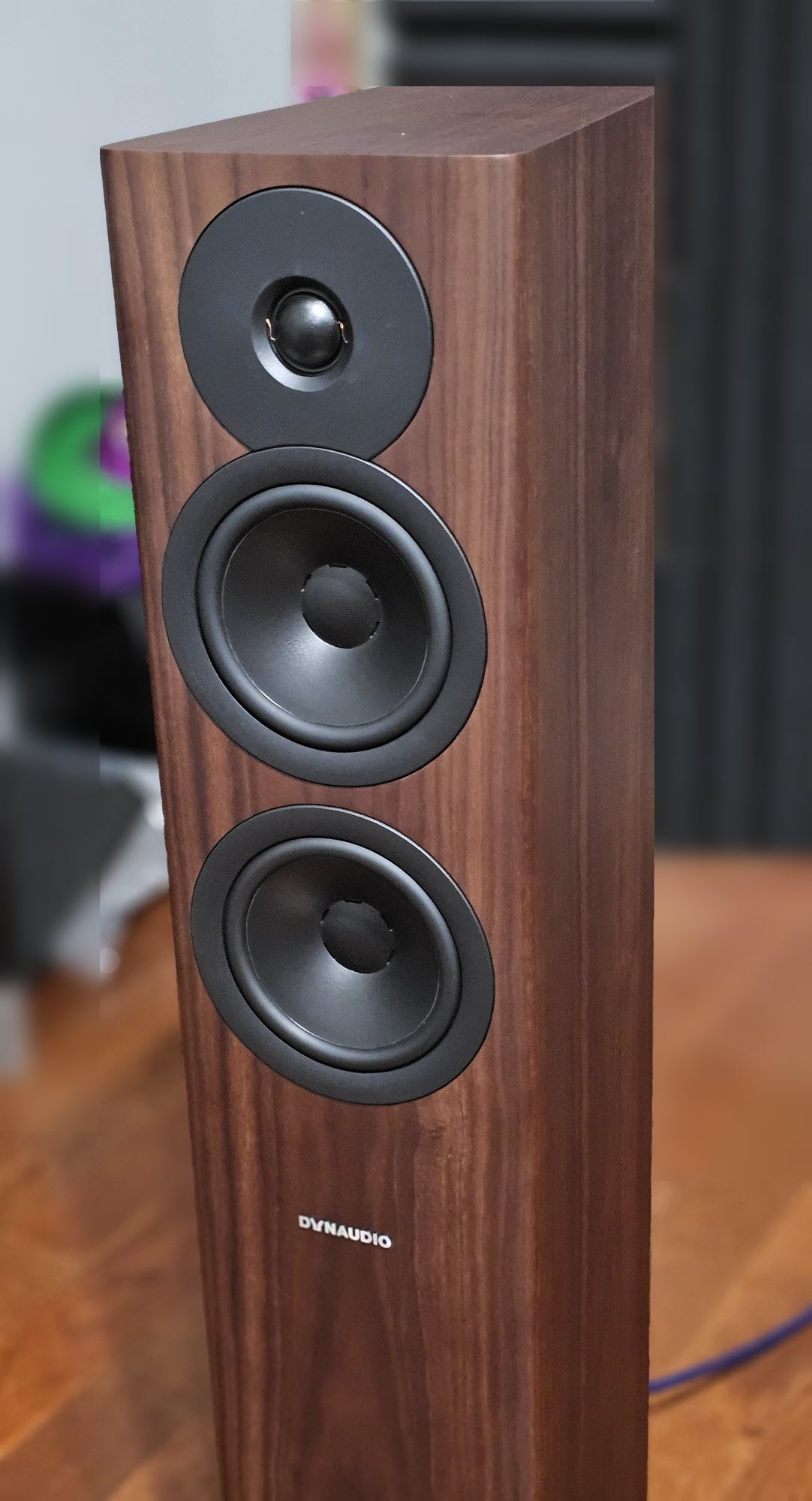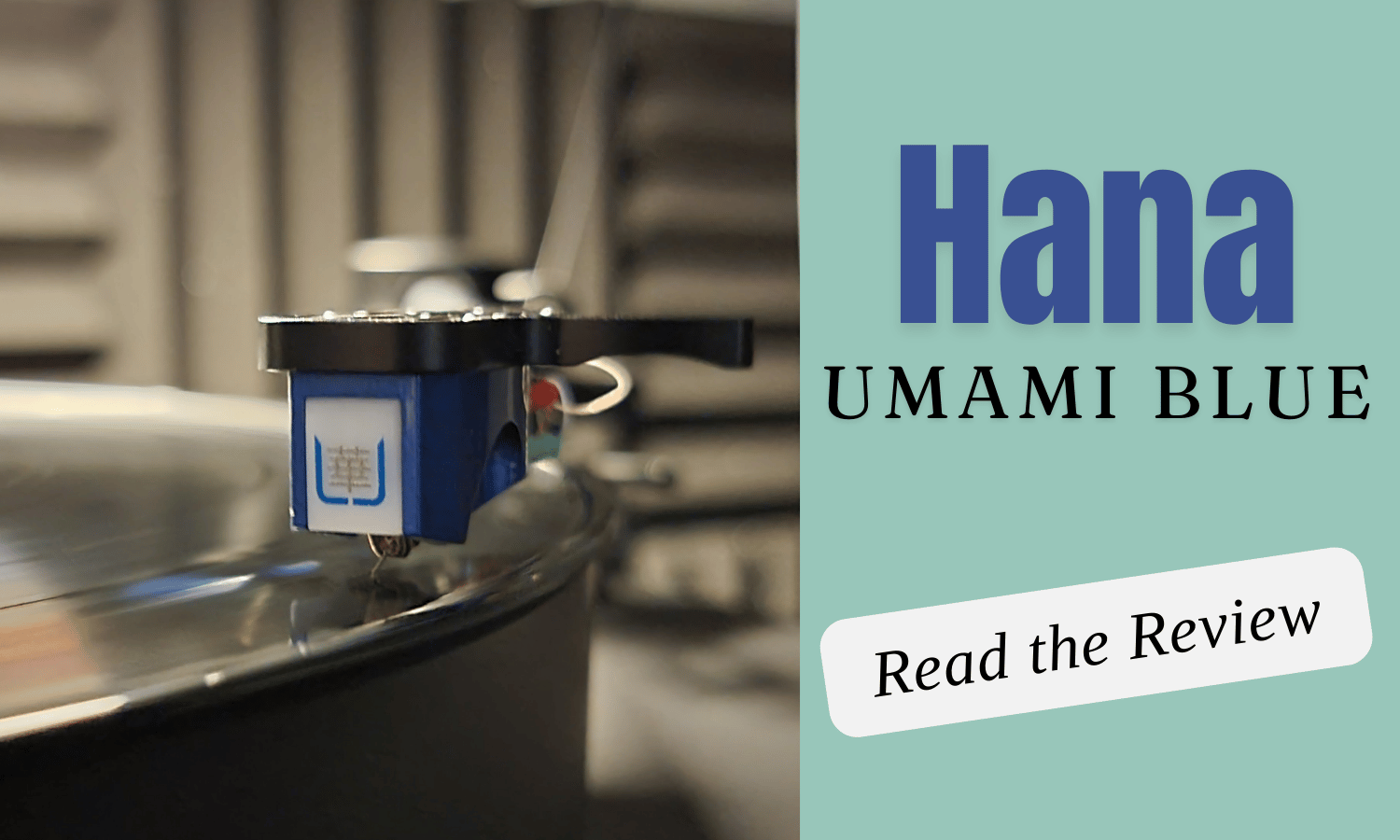Getting to Know the Dynaudio Evoke 30 Loudspeakers
small floor stander, big sound
Denmark based Dynaudio designs and manufactures loudspeaker systems for professional studios, car audio, and home hi-fi, all using advanced driver technology engineered and developed in-house.
When Dynaudio's John Quick offered the opportunity to review the Evoke 30s, I was absolutely stoked. Though I've been impressed by casual listenings to their stand-mount Special 40, I've never had the chance to spend quality time with a pair of Dynaudio speakers.
The Dynaudio Evoke 30
While unboxing these $3,990/pr. compact, two and a half way floor standers that go down to 40Hz, the first words that came to mind were "sleek" and "unobtrusive". There’s nothing particularly fancy or groundbreaking from a visual perspective, but they do have a classy feel, reminiscent of the no-nonsense Clearaudio Performance DC AiR I reviewed some time ago.
The rounded corners provide an elegant detail to the speaker's trapezoidal shape (wider front baffle and tapered towards the rear), which should reduce internal standing waves. The speakers are grounded by what looks to be painted aluminum outriggers that can be fitted with either spikes or feet.
Dynaudio offers four finish options. I was sent a pair finished in flawlessly veneered Walnut Wood. Blonde Wood is the other wood veneer option, and for more contemporary tastes, Dynaudio offers high gloss White and Black.
Unboxing
The Evoke 30 comes triple boxed and very well packed. The company provide a pair of booklets, one of substantial, glossy paper the other more utilitarian. One page of both contained useful information. The other pages contained the same information in various languages.
Magnetic plastic covers protect the soft dome tweeters during shipping. These are so convenient I could see placing them back on for protection when the speakers aren't in use, if they weren't bright yellow. While I understand the color choice was to avoid anyone accidentally leaving them on when in use, I also think that if you can't tell your tweeters aren't producing sound, then maybe high-end audio just isn't your thing.
.png)
A more aesthetically pleasing version would be useful. I get nervous around those protruding soft domes that to a four year old look like giant buttons. I have six grandkids.
Speaker Setup
Meticulous speaker set up and proper room treatment are both critical for achieving the best performance from any loudspeaker. I located the Evoke 30s in my mid-sized and best sounding room. Its dimensions are 14 feet by 16 feet with a tray ceiling. I located home built 36"x48" portable acoustic treatments where they'd effectively deal with the first sidewall reflection point. Acoustic panels behind where I sit and a rug over the hardwood floor complete the room treatment..
I prefer a well-blended soundstage that on the best source material avoids distinct left, center, and right images. Though it can be difficult to achieve—it requires time consuming perfect placement and toe-in—once you get it, you gain depth and instrumental specificity across the soundstage.
In addition to tweaking placement to achieve the desired spatial presentation I spent a great deal of time dialing in the precise location where bass best locked in as in that regard I found these speakers a bit more persnickety than usual.
After weeks of placing electrical tape all over the floor I ended up with the speakers 68" from the front wall to the front baffle, 38" from one side wall, and 54" to the other. Not being equal distance from the side walls helped to reduce standing waves.
More on the speaker placement later.
First Listen
My modus operandi when reviewing loudspeakers is to first listen to an album using my current setup. Then, I swap in the new speakers and play the same album. First impressions mean a lot.
I let the system warm up while at a Mardi Gras parade and when I came home enjoyed Lauryn Hill's Unplugged album. While Lauryn is mostly known as the rapping female from the hip hop group The Fugees, even some fans don’t know she writes all of her music on acoustic guitar.
Although not a guitar virtuoso, she obviously has a powerful connection with her instrument, which elicits an immense amount of passion in her playing that's well-captured in this beautifully recorded album. It's mostly just her, her guitar and a stool, though it sounds as if she was yelling at a football game the night before and almost lost her voice.

Upon lowering the Hana Blue onto the record, I first noticed the Evoke 30s were very dynamic and "fast". The bottom end had more intense attack than I was expecting the relatively small drivers would deliver. The top end was detailed but oddly similar to the speakers it was replacing, a pair of Spendor SP1s. I wasn't expecting that.
The Evoke 30s delivered a dynamic, fast sound with an impressive bottom end for their size. The top end was detailed but smooth, typical of a good soft dome tweeter. Lauryn Hill’s raspy voice was tangible and lifelike, making it feel as if she was in the room with me.
Imaging was close to spot on although not quite the depth of some of the best performers. Lauryn Hill's raspy voice on was so visceral I was nervously wanting to give her a lozenge.
Many modern speakers lean towards air, where the 30s are more liquid with a soft top end. Much like the sound you would expect from a very good soft dome tweeter.
Listening with Different Amplification
Brian Roberts, my partner in crime for audio and competitive record buying, brought over a bunch of albums along with his integrated amp. That provided us the ability to hear the Evoke 30s paired with both the Audio Research Classic 60 and the Rogue Audio Cronus Magnum. With the Audio Research amplifier, the sound had a slightly sharper edge, particularly in the upper midrange, and the bass sometimes felt a bit loose. The ARC runs 6550's in triode, so not always the best for bottom end slam and control.
Because I started with the ARC, getting the bass right is what took a lot of time in speaker setup. Switching to the Rogue Audio amp, the bass tightened significantly and they became much more dynamic, suggesting that the Evoke 30s respond well to an amp that can provide a bit more control and power.
The Dynaudios react well to power and control. With the sultry top end, I would anticipate they would sound fantastic with some good solid state power too. It's not that they are power hungry like Maggies but the Evoke 30s really shine when being pushed. Although I didn't test the 30s with a solid state amp, I feel confident they would react well to a good, powerful solid state amp.
On a similar note...Although I haven't had a video system in years, I still watch movies in two channel and the 30's were very impressive watching action movies. With a bunch of solid state power behind them and the available matching center channel, I believe they would be a great choice for a killer video system.
The Tweeter
To this day, Dynaudio uses the same tweeters they did in 1977! You heard it here first!
Alright, so that’s not exactly true. What is true is that all Dynaudio tweeters have a specially coated 28mm diaphragm, and it’s been that way from the beginning in 1977. It's important to remember, Dynaudio is a driver manufacture and they have been "tweaking the tweeter" for decades.
The Evoke 30 features Dynaudio's Cerotar tweeter. It’s a 28mm coated soft-dome driven by a strontium carbonate Ferrite+ ceramic magnet system. That is actually what derives the name: Ferrite-ceramic magnet; ‘Cerotar’ .

The tweeter incorporates technologies from Dynaudio's higher-end models, such as the Hexis inner dome from the Confidence series, designed to smooth the frequency response and reduce resonances. Their Hexis technology is in the same vain as Meta is for KEF speakers. They introduce an elaborate design behind the dome with deadening material behind that to break up and absorb the rear energy from the tweeter.
More Listening
Kicking back with some Jack Johnson ~ In Between Dreams (Brushfire Records 0602498800348) was a nice experience. Although not necessarily lyrically powerful or featuring insane musicianship or even raw passion, this is an album to just mellow out and smile to for a while.
I have always thought this was a well recorded album focusing on Jack's voice, his guitar and a thunderous bottom end to just warm you up. The Evoke 30s capitalized on many aspects of the sonics: clarity, bass warmth, large soundstage.
I ended up with the Evoke 30s for quite some time...longer than expected. Although they were playing music every single day, my day job of running an SEO agency kept getting in the way of getting the review written. I was very pleased to have the Dynaudios provide my daily dose of music therapy for an extended period of time.
The Sound of the Evoke 30s
I spent an enormous amount of time positioning the Evoke 30s. The upper midbass seemed volatile depending on your seating position and height. I believe, because of the 2.5 design, the two woofers create a comb effect that makes your positioning and seating position more critical than with some other speakers I've auditioned and owned.
The trick is to get the bass reacting properly in the room while having the speakers positioned best for soundstage and depth. Once I was able to get that right, the speakers were very pleasing to listen to.
My final positioning created a huge soundstage with good depth. The image placement was a slightly less precise than a speaker that shines in that area. For me personally, the dept of the image, even if not pin-point is more pleasing than a 2 dimensional image with exact placement.
The next album spun that stood out for me was Ronnie Foster Two Headed Freap. This is the Blue Note Classic Vinyl Series, cut by Kevin Gray. The first two tracks showcase Ronnie's mastery of blending jazz, funk and soul into a smorgasbord of sound being exploded at your face. The 30's have a huge ability to pump out low frequencies, at times even punchier than you might expect. So this album's bottom heavy tracks really showed off the 30s ability to slam you with bass. I remember when I used to demo Steely Dan Aja, the bass bump was immediately noticeable but much enjoyed. The Evoke 30s are a little bit like that.
A Glimpse at the Dynaudio Evoke Series Construction
Conclusion
For audiophiles seeking a speaker that offers both aesthetic appeal and sonic excellence, the Evoke 30 stands as a compelling choice. The Evoke 30s delivered a dynamic, fast sound with an impressive bottom end for their size.
The top end was detailed but smooth, typical of a good soft dome tweeter. The Evoke 30 demonstrates that Dynaudio can create moderately priced speakers that not only look good but also sound exceptional. The Evoke 30s make for a compelling choice in the moderately priced floor stander market well worth a listen.
Specifications
Type: Floorstanding
Sensitivity: 88 dB (@2.83V/1M)
Rated Power Handling: 200 Watts
Frequency Response: 40-23,000 Hz (+/- 3 dB)
Rated Impedance: 4 Ohm
Box: Rear Ported Bass Reflex
Crossover: 2nd Order, 2.5-way 1,200/2,3000 Hz
Tweeter: 28 mm Cerotar Soft Dome with Hexis
Mid/Woofer: 14cm MSP
Woofer: 14cm MSP
Weight: 34.2 lbs each
Height: 35 3/8 Inches
Depth: 10.5 Inches












































